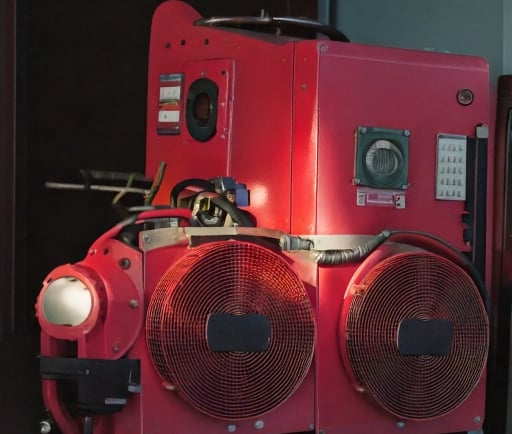Putting out Fires: The AI-Powered Sprinkler System


Introduction to Advanced Fire Safety Technologies
In a world increasingly influenced by technology, safety measures have also witnessed revolutionary advancements. Among these innovations, fire safety technology has made significant strides, especially within public infrastructure. One notable example is the AI-powered sprinkler system recently installed at the Fuyang West Railway Station in China. This ingenious solution stands out not only for its innovation but also for its capability to help protect lives and property.
The Mechanism Behind the AI-Powered Sprinkler System
The AI-powered sprinkler system at Fuyang West Railway Station operates on a sophisticated algorithm that can accurately detect fire conditions. This system is engineered to sense specific temperature thresholds indicative of a fire breakout. Upon detecting such conditions, the system activates the sprinkling mechanism swiftly, releasing water to suppress the flames and mitigate potential damage. The automated nature of this sprinkler system significantly reduces the reaction time compared to traditional firefighting responses, enhancing overall safety measures on-site.
Benefits of the AI-Powered Technology
The most apparent advantage of the AI-powered sprinkler system is its ability to rapidly respond to fire emergencies. By continuously monitoring temperature levels, the system can identify anomalies that may signify a fire, thereby minimizing the risk of extensive damage. Additionally, the use of artificial intelligence in this context allows for constant learning and improvement in detection accuracy over time.
Moreover, integrating such advanced technological systems can lead to reduced insurance costs for establishments, as insurance companies frequently favor properties with enhanced fire safety measures. Ultimately, the deployment of AI-powered systems exemplifies a forward-thinking approach to public safety, where proactive measures are preferred over reactive measures.
Conclusion
The implementation of the AI-powered sprinkler system at Fuyang West Railway Station serves as a paradigm for future safety initiatives in transportation hubs and other public venues. As cities grow and the need for efficient safety solutions escalates, prioritizing smart technology in fire prevention strategies will be crucial. In summary, innovations like these are not just steps but leaps toward a safer and more technologically adept society. By harnessing the power of artificial intelligence, we can protect public spaces from the devastating impacts of fire, ensuring that safety remains a primary concern in urban planning and infrastructure development.
